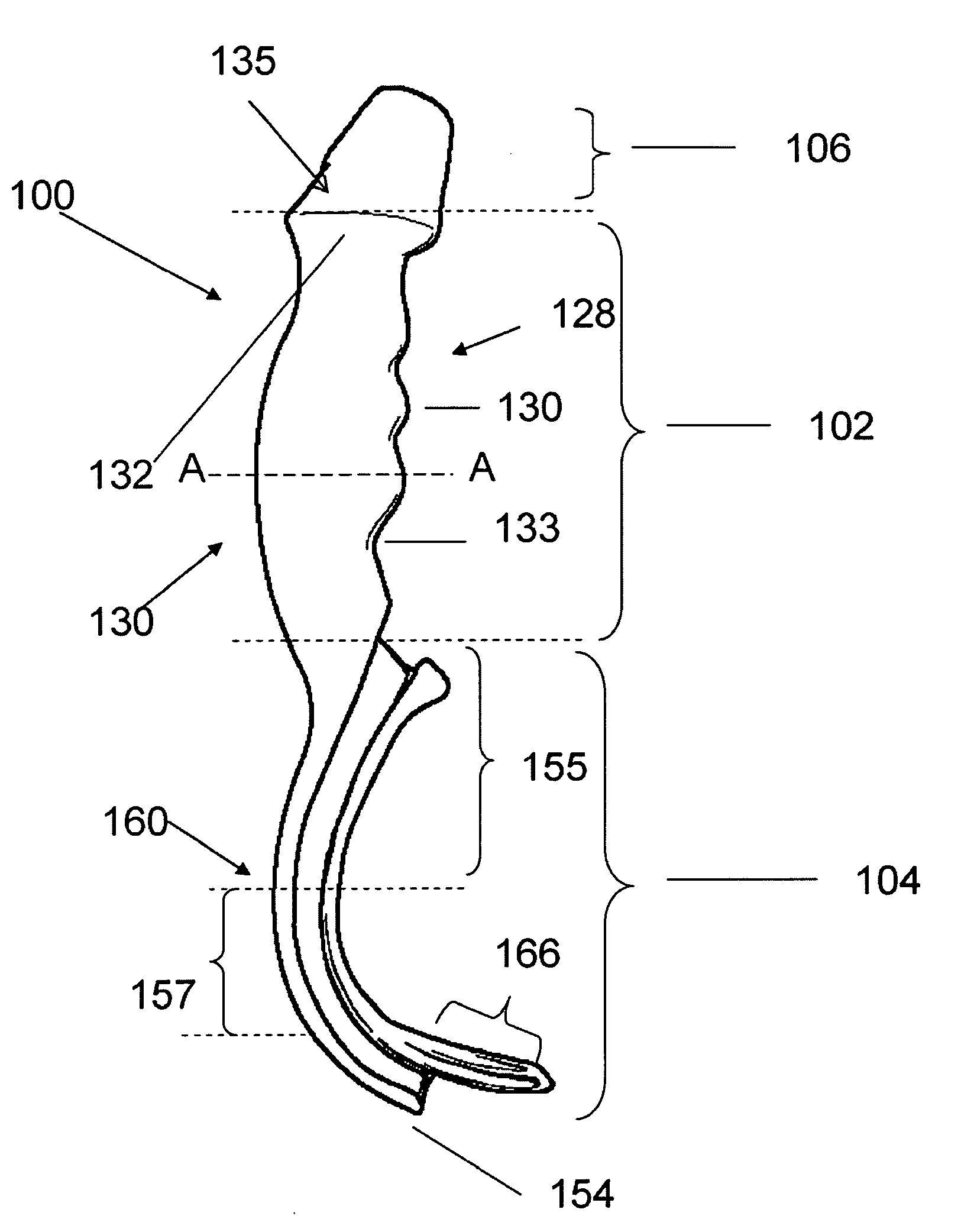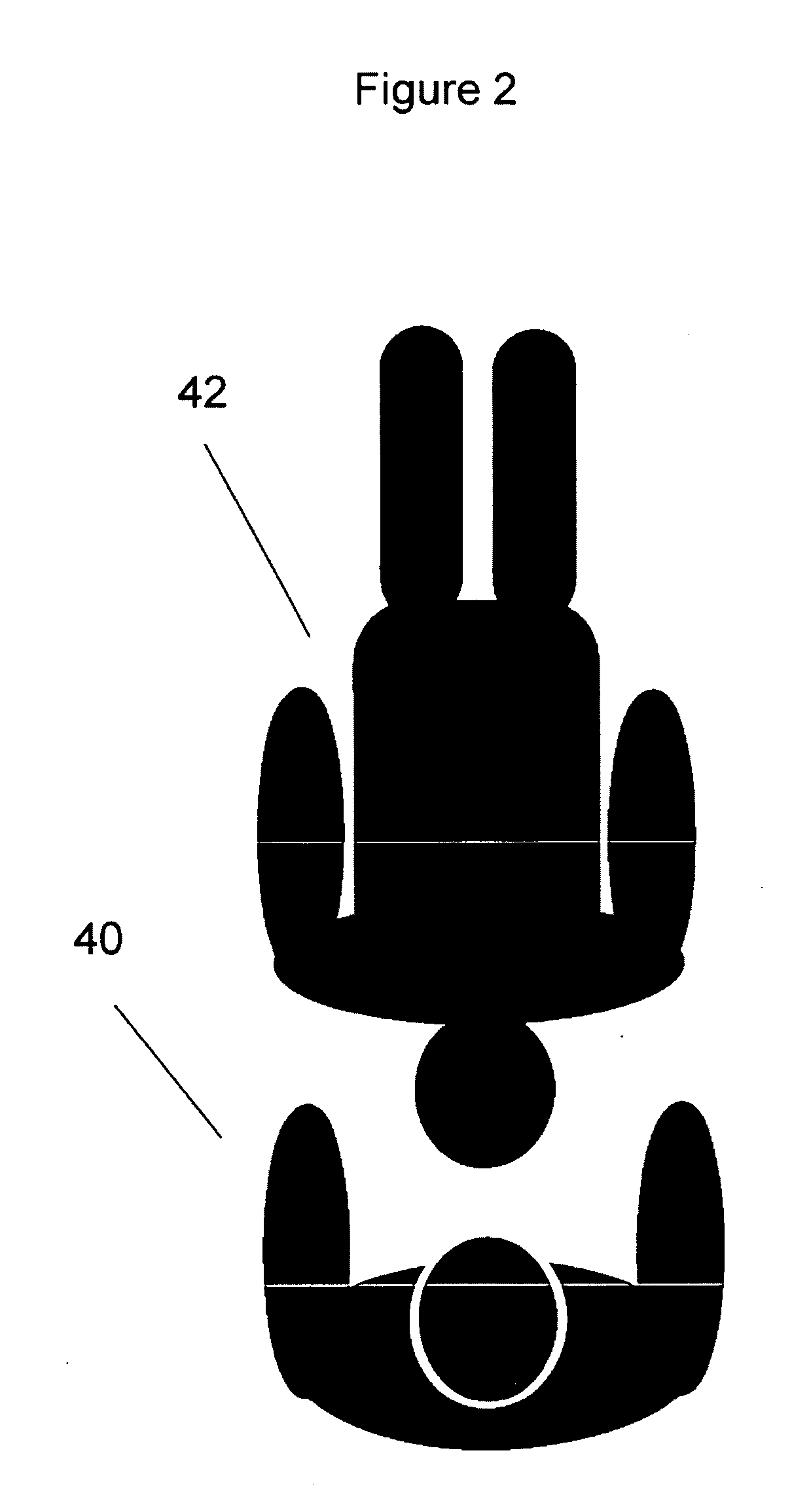Airway intubation device
a technology of airway and intubation, which is applied in the field of medical devices, can solve the problems of patient's death, failure to achieve 90% success rate, and failure to achieve oxygenation, so as to avoid tissue damage during intubation and improve the illumination of the intubation operation.
- Summary
- Abstract
- Description
- Claims
- Application Information
AI Technical Summary
Benefits of technology
Problems solved by technology
Method used
Image
Examples
Embodiment Construction
[0037]The process and principals of endotracheal intubation are well known. Referring to FIG. 1, there is shown a cross-section of a human head (10) and neck (12) to illustrate the anatomy relevant to intubation. There is shown the nose (14) and nasal passage (16). The palate (18) separates the mouth (20) and oral cavity (24) from the nasal passages. The upper (26) and lower (28) teeth and tongue (30) are also shown. During breathing, air travels down the windpipe or trachea (32) into the lungs. Food and water travel down the esophagus (34) to the stomach. To avoid choking, the epiglottis (36) closes the trachea when swallowing and opens again to permit breathing. The vocal cords (38) are located below the epiglottis and mark the entry point into the trachea. All of these airway soft-tissues are vulnerable to damage during intubation. The major challenge in performing endotracheal intubation relates to the need to see around the corner created in part by the tongue and epiglottis. T...
PUM
 Login to View More
Login to View More Abstract
Description
Claims
Application Information
 Login to View More
Login to View More - R&D
- Intellectual Property
- Life Sciences
- Materials
- Tech Scout
- Unparalleled Data Quality
- Higher Quality Content
- 60% Fewer Hallucinations
Browse by: Latest US Patents, China's latest patents, Technical Efficacy Thesaurus, Application Domain, Technology Topic, Popular Technical Reports.
© 2025 PatSnap. All rights reserved.Legal|Privacy policy|Modern Slavery Act Transparency Statement|Sitemap|About US| Contact US: help@patsnap.com



